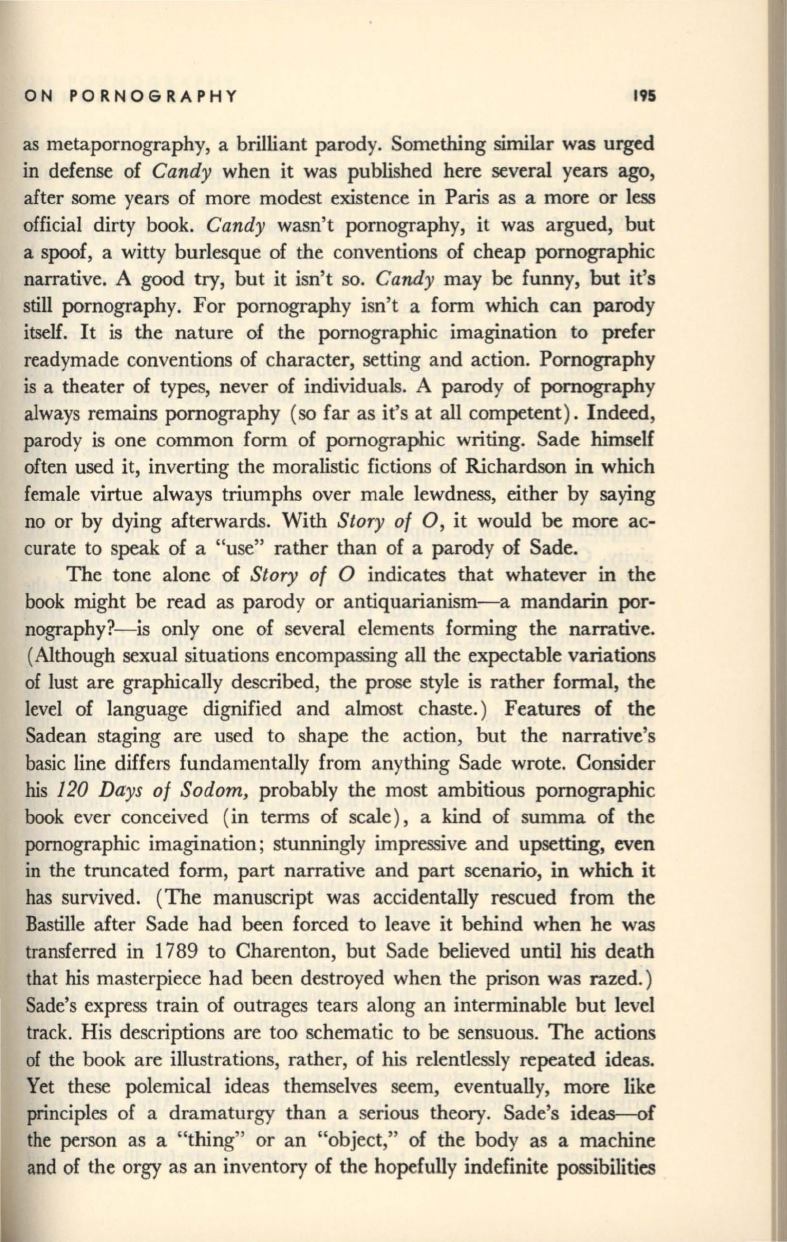
ON PORNOGRAPHY
195
as metapornography, a brilliant parody. Something similar was urged
in defense of
Candy
when it was published here several years ago,
after some years of more modest existence in Paris as a more or less
official dirty book.
Candy
wasn't pornography, it was argued, but
a spoof, a witty burlesque of the conventions of cheap pornographic
narrative. A good try, but it isn't so.
Candy
may be funny, but it's
still pornography. For pornography isn't a form which can parody
itself. It
is
the nature of the pornographic imagination to prefer
readymade conventions of character, setting and action. Pornography
is a theater of
types,
never of individuals. A parody of pornography
always remains pornography (so far as it's at all competent). Indeed,
parody
is
one common form of pornographic writing. Sade himself
often used it, inverting the moralistic fictions of Richardson in which
female virtue always triumphs over male lewdness, either by saying
no or by dying afterwards. With
Story of
0, it would be more ac–
curate to speak of a "use" rather than of a parody of Sade.
The tone alone of
Story of
0 indicates that whatever in the
book might be read as parody or antiquarianism-a mandarin por–
nography?- is only one of several elements forming the narrative.
(Although sexual situations encompassing all the expectable variations
of lust are graphically described, the prose style is rather formal, the
level of language dignified and almost chaste.) Features of the
Sadean staging are used to shape the action, but the narrative's
basic line differs fundamentally from anything Sade wrote. Consider
his
120 Days of Sodom,
probably the most ambitious pornographic
book ever conceived (in terms of scale), a kind of summa of the
pornographic imagination; stunningly impressive and upsetting, even
in the truncated form, part narrative and part scenario, in which it
has survived. (The manuscript was accidentally rescued from the
Bastille after Sade had been forced to leave it behind when he was
transferred in 1789 to Charenton, but Sade believed until his death
that his masterpiece had been destroyed when the prison was razed.)
Sade's express train of outrages tears along an interminable but level
track. His descriptions are too schematic to be sensuous. The actions
of the book are illustrations, rather, of his relentlessly repeated ideas.
Yet these polemical ideas themselves seem, eventually, more like
principles of a dramaturgy than a serious theory. Sade's ideas--of
the person as a "thing" or an "object," of the body as a machine
and of the orgy as an inventory of the hopefully indefinite possibilities


